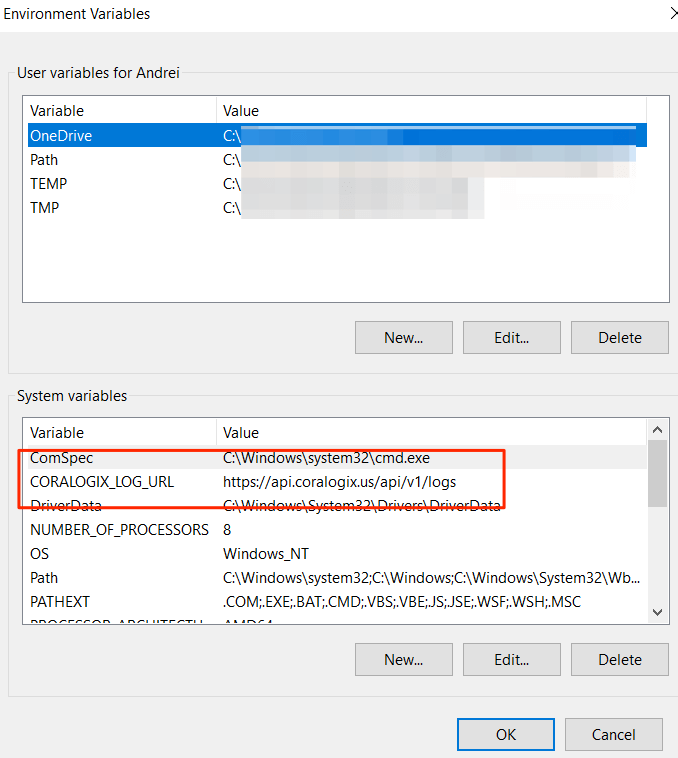log4net
To install Coralogix.Log4net.1.2.10.Only, run the following command in the Package Manager Console -
To install Coralogix Log4net 2.0 and Above, run the following command in the Package Manager Console -
For .NET Core, use:
General:
Private Key – Your Send-Your-Data API key is a unique ID that represents your company.
Application Name – The name of your main application, for example, a company called "SuperData" would probably insert the "SuperData" string parameter or if they want to debug their test environment they might enter the "SuperData– Test".
SubSystem Name – Your application probably has multiple subsystems, for example, Backend servers, Middleware, Frontend servers, etc. to help you examine the data you need, inserting the subsystem parameter is vital.
Endpoint URL
If your team is part of a different Coralogix domain rather than coralogix.com, then there is a need to define an environment variable <CORALOGIX_LOG_URL> which will indicate to the specific endpoint for your team's domain.
Create an endpoint URL by inputting your Coralogix account domain as follows:
https://ingress.
Via Log4NET configuration XML:
<?xml version="1.0" encoding="utf-8" ?>
<log4net>
<appender name="CoralogixLog4NetAppender" type="CoralogixLog4Net.CoralogixLog4NetAppender, CoralogixLog4Net" >
<applicationName>MyApp</applicationName>
<subsystemName>BL</subsystemName>
<privateKey>11111111-1111-1111-1111-111111111111</privateKey>
<layout type="log4net.Layout.PatternLayout">
<conversionPattern value="%date [%thread] %-5level %logger [%ndc] - %message%newline" />
</layout>
</appender>
<root>
<level value="INFO" />
Via code:
//Initilizing new CoralogixLog4Net appender.
CoralogixLog4NetAppender coralogixAppender = new CoralogixLog4NetAppender();
coralogixAppender.PrivateKey = "11111111-1111-1111-1111-111111111111";
coralogixAppender.ApplicationName = "MyTestApp";
coralogixAppender.SubsystemName = "BL";
//Configure the Level filter for the Coralogix Appender
var coralogixFilter = new log4net.Filter.LevelRangeFilter();
coralogixFilter.LevelMin = Level.All;
coralogixAppender.AddFilter(coralogixFilter);
log4net.Config.BasicConfigurator.Configure(coralogixAppender);
//Adding the Coralogix log4Net appender to the Repository
var root = ((log4net.Repository.Hierarchy.Hierarchy)LogManager.GetRepository()).Root;
var attachable = root as IAppenderAttachable;
if (attachable != null)
{
attachable.AddAppender(coralogixAppender);
}
// Define the actual log4net logger which through it all log entires should be reported
ILog logger = log4net.LogManager.GetLogger(typeof(Program));
//Activate the Coralogix appender to the log4net logger which was just created above
coralogixAppender.ActivateOptions();
Need help? We love to assist our customers, simply reach out via our in-app chat, and we will walk you through, step by step.
